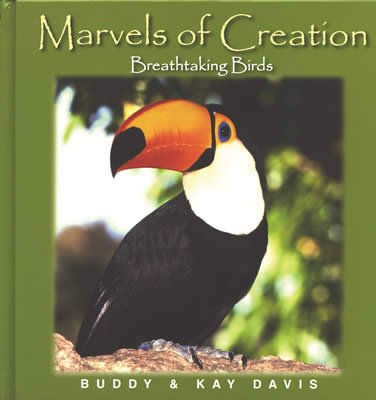Emperor Penguin
Denis Luyten, Public domain, via Wikimedia Commons
The emperor penguin is one of the largest, and hardiest of the seabirds.

The emperor penguin is one of the largest, and hardiest of the seabirds. It makes its home in the harsh climate of Antarctica on the barren ice packs and along the coastlines. Enduring sub-zero temperatures and hurricane force winds, the penguin can survive in these extreme conditions because of its thick plumage. Two dozen short and stiff feathers per square inch with a downy base trap a layer of warm, insulating air. Having their body low to the ground helps as well by keeping the cold air out.
The upper part of the penguin’s body has black feathers and the lower body is white with a yellowish tinge. It almost looks as if it were wearing a tuxedo. There is a very distinctive broad yellow marking on its neck.
The emperor penguin feeds on squid and fish that it pursues underneath the water, catching them in its long razor-edged bill. The inside of the mouth and tongue are covered with backward pointing knobs which help prevent the fish from slipping out. The penguin does swallow a considerable amount of seawater but the excess salt is excreted through large salt glands just above the eyes. It can dive after food as deep as 870 feet (265.2 m) and hold its breath for 18 to 20 minutes. Its heavy body is one factor which enables the emperor penguin to dive deep.
In April and May, the penguins gather for mating at the rookeries (nesting areas) which are located inland on solid ice. In August, each female lays one large egg, which is carried on the feet and covered with a fold of skin. It is passed between the female and male until the female heads off to feed in the open water a few days after the egg is laid.
The male incubates the egg for 40 to 50 days, shielding it from the sub-zero weather with a fold of skin. Penguins huddle together to keep warm. The warmest place is in the middle of the group. They keep moving in and out of the huddle so that every bird gets a chance to get warm in the center of the huddle. The female returns a few days before the egg hatches to finish the incubation and the male goes to sea to feed. Upon hatching, she stays with the chick for approximately 40 days. By mid-January, the chick has shed its coat of down and has its adult plumage. The chick is on its own now as they all leave the rookery.
The penguins have few predators because of the barrenness and fierce cold of Antarctica, but occasionally adult penguins are taken by leopard seals or killer whales. Young penguins are stalked by the giant petrel.
Emperor Penguin
Sphenisciformes • Spheniscidae
Aptenodytes forsteri
Weight: 66 pounds (30 kg)
Length: 45 inches (115 cm)
Life Span: 20 years
Special
Design Feature: The emperor penguin survives the coldest weather in the world,
having a thick layer of feathers that are short and stiff with a downy base.
Did you know? The emperor penguin can dive up to 870 feet (265.2 m) and stay
underwater for 18 minutes.
Marvels of Creation: Breathtaking Birds
This spectacular book brings the world of feathered creatures alive in a unique and colorful way.
Browse Kids Book- © 2025 Answers in Genesis
- Privacy Policy
- Contact
- About

